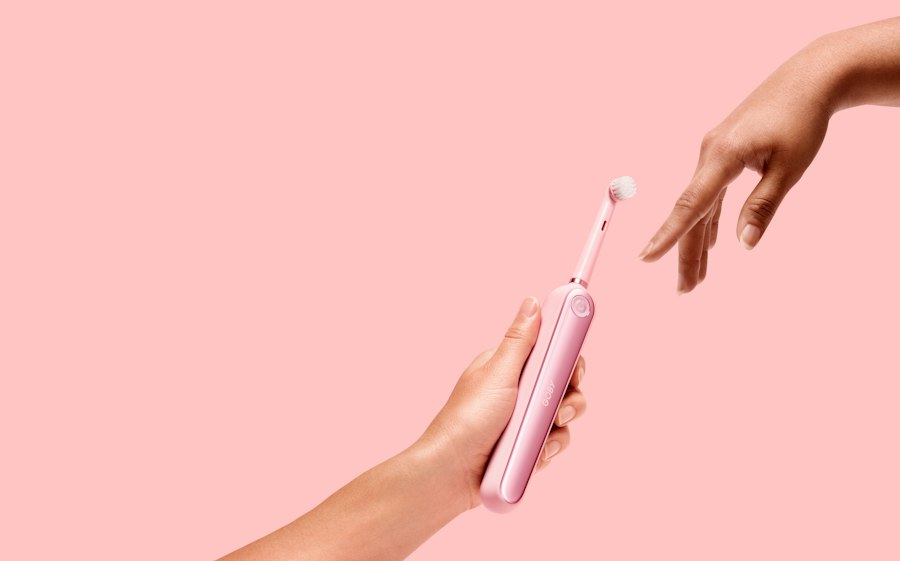“This post may contain affiliate links, if you click a link we may earn a commission if you purchase from that merchant.”
When it comes to dental care, many people are often surprised by the high costs associated with out-of-network dental services. Out-of-network dental costs refer to the fees charged by dentists who do not participate in a patient’s dental insurance network. These costs can be significantly higher than in-network fees, leaving patients with hefty bills to pay out of pocket.
The reason why out-of-network dental costs can be so expensive is because dental insurance plans negotiate discounted rates with dentists who are in their network. This means that when you visit an in-network dentist, you will pay a lower fee for the same service compared to an out-of-network dentist. However, if you choose to see an out-of-network dentist, you may have to pay the full cost of the service upfront and then seek reimbursement from your insurance company.
Table of Contents
Key Takeaways
- Out-of-network dental costs can be expensive and unexpected
- Understanding your dental insurance coverage is crucial for managing costs
- Regular check-ups can prevent costly dental procedures in the future
- Preventative care, such as brushing and flossing, can save money on dental procedures
- Affordable options for orthodontics and teeth whitening are available with research and negotiation
Dental Insurance: What You Need to Know
Dental insurance is designed to help cover the cost of dental care and make it more affordable for individuals and families. It works by paying a portion of the cost of dental services, such as cleanings, fillings, and extractions. However, it’s important to understand how dental insurance works and the difference between in-network and out-of-network coverage.
In-network coverage refers to services provided by dentists who have agreed to accept a negotiated fee from your insurance company. This means that if you visit an in-network dentist, you will typically pay less out of pocket because your insurance plan has already negotiated a discounted rate for those services.
On the other hand, out-of-network coverage refers to services provided by dentists who have not agreed to accept a negotiated fee from your insurance company. This means that if you visit an out-of-network dentist, you may have to pay the full cost of the service upfront and then seek reimbursement from your insurance company. The reimbursement amount will usually be based on a percentage of the allowed amount for that service.
When choosing a dental insurance plan, it’s important to consider your specific dental needs and budget. Look for plans that have a wide network of dentists in your area and offer coverage for the services you are most likely to need. Additionally, pay attention to the annual maximum benefit, which is the maximum amount of money that your insurance plan will pay for dental services in a given year. Choosing the right dental insurance plan can help you save money on both in-network and out-of-network dental costs.
Oral Health: The Importance of Regular Check-Ups
Regular dental check-ups are essential for maintaining good oral health and preventing more serious dental issues down the line. During a check-up, your dentist will examine your teeth and gums, clean your teeth, and address any concerns or issues that may arise. By visiting your dentist regularly, you can catch problems early on and prevent them from becoming more serious and costly to treat.
One of the main reasons why regular check-ups are important is because they allow your dentist to identify and treat dental issues before they worsen. For example, if you have a small cavity, your dentist can fill it during a routine check-up. However, if you neglect to visit the dentist and the cavity goes untreated, it can progress into a larger cavity or even an infection, which may require more extensive treatment such as a root canal or extraction.
Regular check-ups also give your dentist the opportunity to provide preventative care, such as fluoride treatments and sealants. These treatments can help strengthen your teeth and protect them from decay. By investing in preventative care, you can save money in the long run by avoiding more expensive treatments for advanced dental issues.
Preventative Care: How to Save Money on Dental Procedures
Maintaining good oral health is not only important for your overall well-being but can also help you save money on dental procedures. By practicing good oral hygiene and investing in preventative care, you can reduce your risk of developing dental issues that may require costly treatments.
One of the most important aspects of preventative care is practicing good oral hygiene at home. This includes brushing your teeth at least twice a day, flossing daily, and using mouthwash. By removing plaque and bacteria from your teeth and gums on a regular basis, you can prevent the buildup of tartar and reduce your risk of developing cavities and gum disease.
In addition to good oral hygiene, it’s also important to maintain a healthy diet and limit your intake of sugary foods and drinks. Sugar can contribute to tooth decay, so by reducing your consumption of sugary snacks and beverages, you can help protect your teeth from cavities.
Another important aspect of preventative care is visiting your dentist regularly for check-ups and cleanings. During these visits, your dentist can identify any potential issues early on and provide treatment before they worsen. Additionally, professional cleanings can remove plaque and tartar that cannot be removed through regular brushing and flossing alone.
By investing in preventative care, you can save money on dental procedures in the long run. Preventing dental issues from developing or catching them early on can help you avoid more expensive treatments such as root canals, extractions, or dental implants.
Orthodontics: Finding Affordable Options
Orthodontic treatment, such as braces or aligners, is often necessary to correct misaligned teeth or bite issues. However, orthodontic treatment can be expensive, making it difficult for some individuals and families to afford.
One way to find affordable orthodontic care is to explore different treatment options. Traditional metal braces are often the most affordable option, but there are also alternatives available that may be more cost-effective for certain individuals. For example, clear aligners such as Invisalign are a popular alternative to braces and may be a more affordable option for some patients.
Additionally, some orthodontic practices offer payment plans or financing options to help make treatment more affordable. These plans allow you to spread out the cost of treatment over a period of time, making it more manageable for your budget. Be sure to inquire about these options when consulting with orthodontic providers.
Another option to consider is seeking orthodontic treatment at a dental school or university clinic. These facilities often offer discounted rates for orthodontic treatment because the procedures are performed by dental students under the supervision of experienced orthodontists. While the treatment may take longer due to the learning process, it can be a more affordable option for those on a tight budget.
Teeth Whitening: DIY vs. Professional Treatments
Teeth whitening is a popular cosmetic dental procedure that can help brighten your smile and boost your confidence. There are two main options for teeth whitening: DIY treatments and professional treatments. Each option has its pros and cons, and it’s important to consider your budget and desired results when choosing the right option for you.
DIY teeth whitening treatments are typically more affordable than professional treatments. There are many over-the-counter whitening products available, such as whitening toothpaste, whitening strips, and whitening gels. These products contain bleaching agents that can help remove surface stains and lighten the color of your teeth.
However, DIY treatments may not be as effective as professional treatments and may take longer to achieve noticeable results. Additionally, overuse or improper use of DIY whitening products can lead to tooth sensitivity or gum irritation. It’s important to follow the instructions carefully and consult with your dentist before starting any DIY teeth whitening treatment.
Professional teeth whitening treatments, on the other hand, are performed by a dentist or dental hygienist and typically yield faster and more dramatic results. These treatments use stronger bleaching agents that can penetrate deeper into the tooth enamel to remove stains and discoloration. Professional treatments can be more expensive than DIY treatments, but they are often more effective and provide longer-lasting results.
When deciding between DIY and professional teeth whitening, it’s important to consider your budget, desired results, and any potential risks or side effects. Consulting with your dentist can help you make an informed decision and determine the best option for your specific needs.
Negotiating with Dental Providers: Tips and Tricks
If you find yourself facing high dental costs, it’s worth exploring the option of negotiating with your dental providers to lower the fees. While not all providers may be willing to negotiate, it’s worth a try as it can potentially save you a significant amount of money.
One tip for negotiating with dental providers is to do your research and gather information about the average cost of the procedure or treatment you need. This will give you a better understanding of what is considered a fair price and can help you negotiate from a position of knowledge.
When approaching your dental provider about negotiating fees, be polite and respectful. Explain your financial situation and express your willingness to pay but at a reduced rate. Some providers may be willing to offer a discount or work out a payment plan if they understand your circumstances.
Another tip is to ask about any available discounts or promotions. Some dental providers offer discounts for cash payments or for patients who pay in full upfront. Additionally, some providers may have special promotions or offers for new patients or certain procedures. It never hurts to ask if there are any available discounts that you may qualify for.
Using Health Savings Accounts and Flexible Spending Accounts
Health savings accounts (HSAs) and flexible spending accounts (FSAs) are financial tools that can help individuals and families save money on healthcare expenses, including dental costs. These accounts allow you to set aside pre-tax dollars to use for eligible medical expenses, such as dental procedures, prescriptions, and co-pays.
HSAs are available to individuals who have a high-deductible health insurance plan. Contributions to an HSA are tax-deductible, and any unused funds can roll over from year to year. The money in an HSA can be used to pay for a wide range of medical expenses, including dental treatments and procedures.
FSAs, on the other hand, are offered through employers and allow employees to set aside pre-tax dollars to use for eligible medical expenses. Unlike HSAs, FSAs have a “use it or lose it” rule, meaning that any unused funds at the end of the plan year are forfeited. However, some employers offer a grace period or allow employees to carry over a portion of their unused funds to the following year.
To use an HSA or FSA for dental costs, simply pay for the services using your HSA or FSA debit card or submit a reimbursement claim with the necessary documentation. It’s important to keep track of your expenses and save receipts for any dental procedures or treatments that you pay for using your HSA or FSA.
Seeking Financial Assistance: Grants and Programs
If you are unable to afford dental care even with insurance or other cost-saving measures, there are grants and programs available that can help provide financial assistance. These resources are designed to help individuals and families who are in need of dental care but cannot afford the full cost.
One option is to look for dental grants that are offered by nonprofit organizations or foundations. These grants may cover all or a portion of the cost of dental procedures, depending on the specific program. To apply for a dental grant, you will typically need to provide proof of income and demonstrate your financial need.
Another option is to explore government-funded programs that provide dental care for low-income individuals and families. Medicaid is a federal program that provides healthcare coverage for low-income individuals and families, including dental care. Each state has its own Medicaid program, so eligibility and coverage may vary. Additionally, some states offer separate dental programs for children, such as the Children’s Health Insurance Program (CHIP).
It’s also worth checking with local dental schools or university clinics, as they may offer discounted or free dental services to individuals who meet certain income requirements. These facilities often have dental students who are supervised by experienced dentists and can provide a range of dental treatments at a reduced cost.
Taking Control of Your Dental Costs
In conclusion, understanding out-of-network dental costs and how they can be expensive is the first step in taking control of your dental health and finances. By choosing the right dental insurance plan, practicing good oral hygiene, and investing in preventative care, you can save money on dental procedures and avoid more costly treatments in the long run.
When it comes to orthodontics and teeth whitening, exploring affordable options and considering DIY treatments versus professional treatments can help you make an informed decision based on your budget and desired results.
Negotiating with dental providers, utilizing health savings accounts and flexible spending accounts, and seeking financial assistance through grants and programs are additional strategies that can help make dental care more affordable.
By taking control of your dental costs and prioritizing your oral health, you can ensure that you receive the necessary care without breaking the bank. Remember to consult with your dentist or insurance provider for personalized advice and guidance based on your specific needs and circumstances.
If you’re looking for more information on managing out-of-network dental costs, you may also be interested in our related article on “The Basics of Car Insurance.” This article provides valuable insights into understanding the different aspects of car insurance and how to navigate through the complexities of coverage options. Whether you’re a new driver or simply looking to save on your car insurance rates, this article offers helpful tips and advice. Check it out here.
FAQs
What are out-of-network dental costs?
Out-of-network dental costs refer to the expenses incurred when a patient receives dental care from a dentist who is not in their insurance network.
Why are out-of-network dental costs higher?
Out-of-network dental costs are higher because insurance companies negotiate lower rates with dentists who are in their network. When a patient goes to an out-of-network dentist, they may be charged the full cost of the service, which can be significantly higher.
How can I avoid out-of-network dental costs?
To avoid out-of-network dental costs, patients should choose a dentist who is in their insurance network. Patients can also check with their insurance company to see if a particular dentist is in their network before scheduling an appointment.
What should I do if I can’t find an in-network dentist?
If a patient cannot find an in-network dentist, they should contact their insurance company to see if they can receive an exception or if there are any out-of-network benefits available. Patients can also negotiate with the out-of-network dentist for a lower rate or payment plan.
How can I manage out-of-network dental costs?
To manage out-of-network dental costs, patients should ask for an estimate of the cost of the service before receiving treatment. Patients can also negotiate with the dentist for a lower rate or payment plan. Additionally, patients can use a dental savings plan or credit card to help cover the cost of the service.



































